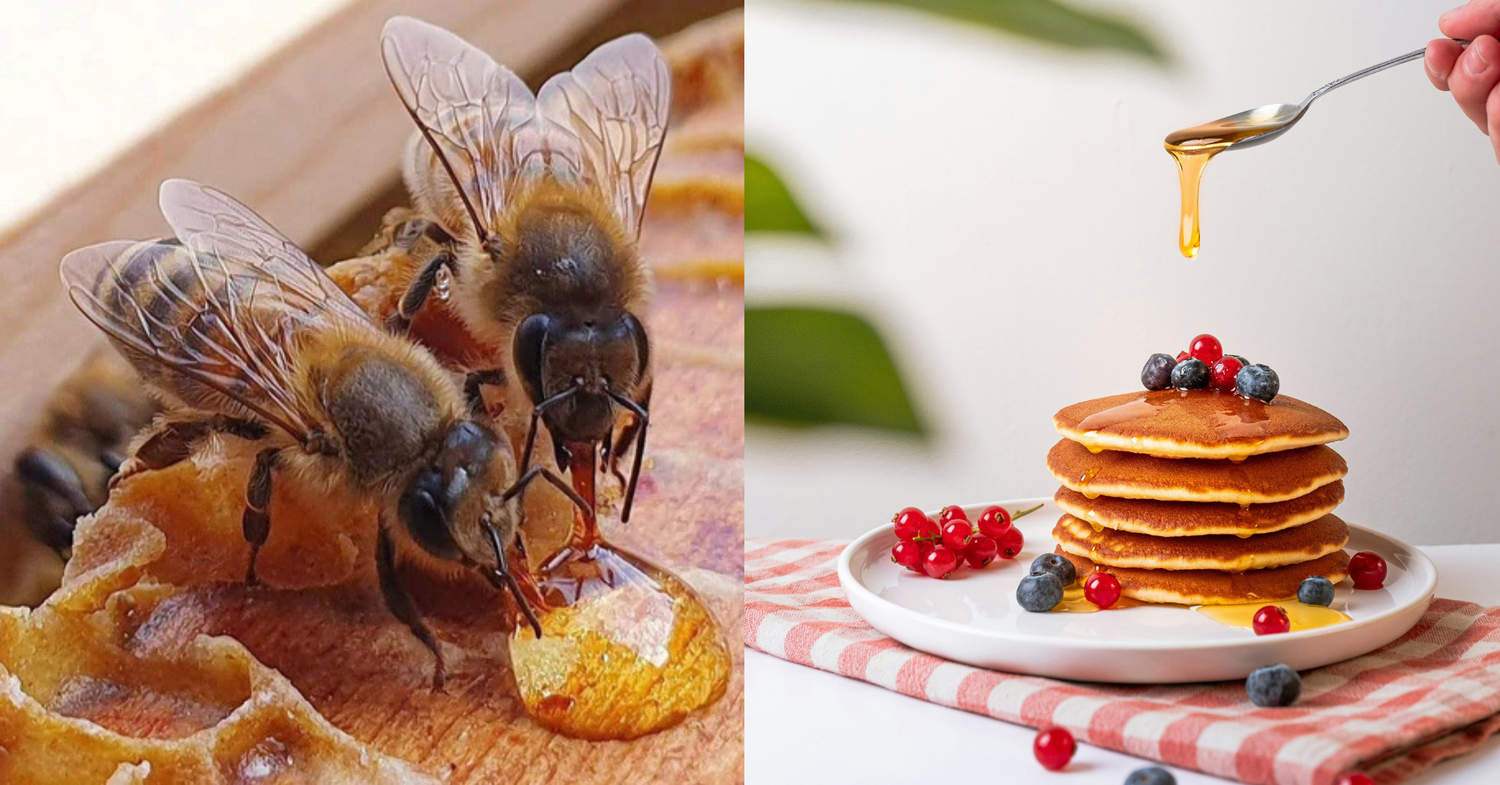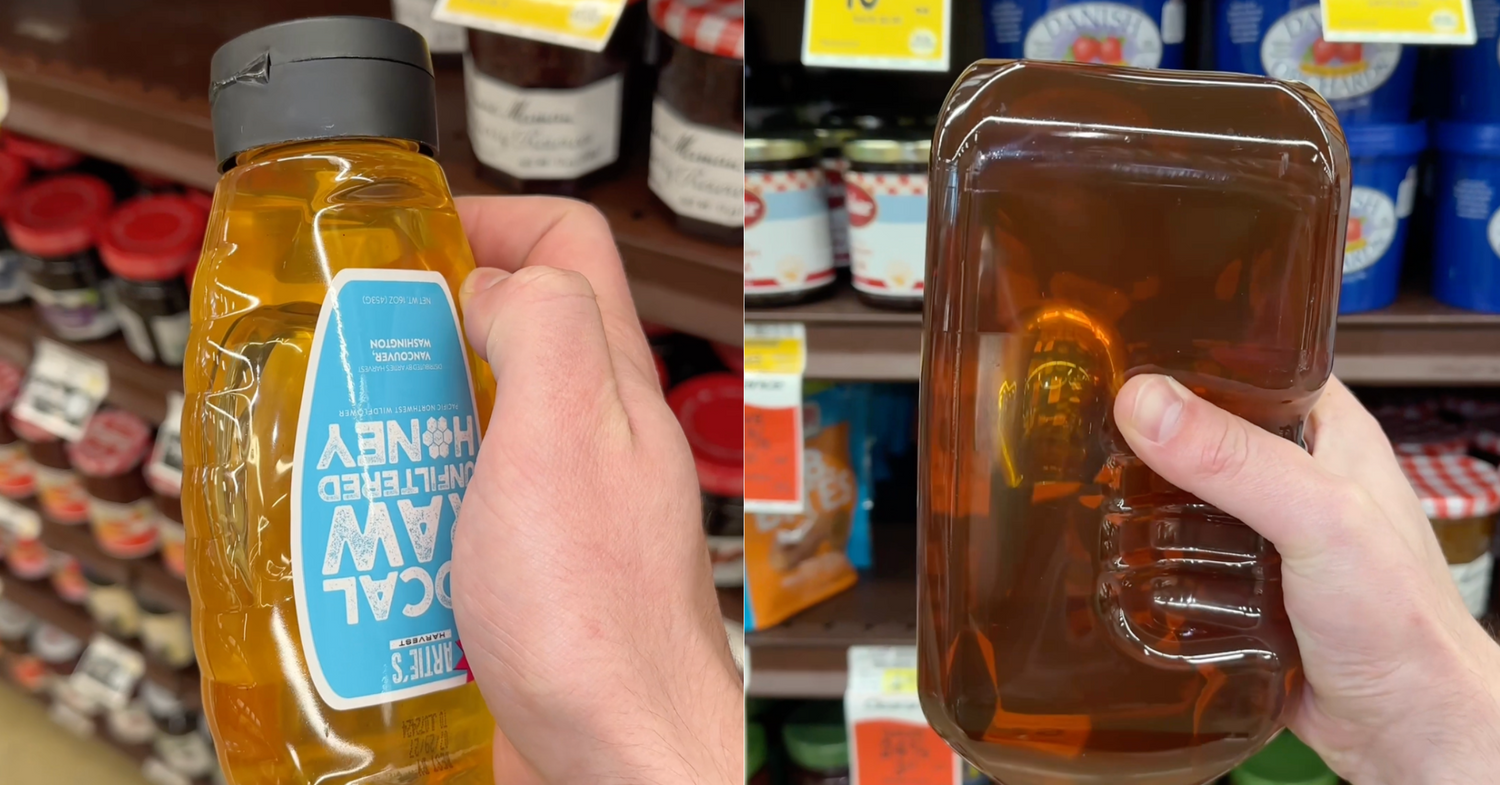Credit: The Star View Original Threat

Raw honey, which is essentially honey derived directly from bee hives, without any processing, has become very popular during the Covid-19 pandemic. — Photo: PIXABAY/Pexels
The Covid-19 pandemic has been a major catalyst for change, and for many people, this has translated to seismic shifts in eating patterns or the addition of essential superfoods into their diets.
One of these popular new inclusions has been raw honey, which is renowned for its antioxidant and anti-inflammatory properties.
“Our enquiries for bee products increased, and sales increased by 42%, which I think means that the health-conscious public are seeking more options for their general wellbeing.
“In fact, at one point, demand was so high, we didn’t have enough to supply to consumers,” says beekeeper Steve Chor, who produces a range of raw honey under the umbrella of his brand Steve Honey.
Chor’s views are echoed by Paul Poh who owns honey-centric lifestyle stores Jungle House with his wife Ashley Lam.
“Oh yes, a lot of people have been enquiring about honey – not just raw honey, but anything related to honey. The trend of people wanting to buy honey has increased,” says Poh.
Both Chor and Poh say that in Malaysia, honey is often viewed as an exotic addition to the kitchen and one that isn’t commonly sought out in food preparation. Instead, it is often thought of only in situations where its curative properties are required.
“In Malaysia, people seek out honey to sort out health problems when they are sick whereas in Europe, it is considered food. But during the pandemic, people have been looking to boost their immunity, so a lot of people were asking about raw honey and even honeycombs.
“When we set up our online store during the pandemic, we weren’t sure we would do well, but we soon realised that a lot of people wanted to buy honey during the pandemic,” says Poh.
So just what are the health properties of raw honey anyway? Honey is made up primarily of the simple sugars fructose and glucose and contains an assortment of vitamins, minerals, amino acids and antioxidants, like flavonoids and phenolic acid. Micronutrients in honey include potassium, sodium, phosphorus, calcium and vitamin C.
Historically, honey has been used to treat wounds (it has antimicrobial properties) and alleviate coughs (Chor says this really works with raw honey and garlic). Honey has also been shown to limit infections.
What is raw honey?
Bees are crucial creatures in the natural ecosystem, as 80% of fruits and plants depend on bees to pollinate them.
Honey has been consumed for more than 8,000 years and is produced when bees pollinate flowers or fruits. This nectar is converted into simple sugars in the honeycomb, which eventually breaks down into honey.
There are three main kinds of honey in the market – raw honey, processed honey and synthetic honey. Raw honey is essentially honey that has been harvested from bee hives and then bottled straight away after impurities (like dead bees, etc) are removed.
With raw honey, components like bee pollen and propolis remain intact and the honey is also not subject to filtration, pasteurisation or heating, which means all the nutritional elements are still in place.
Processed honey on the other hand, goes through a number of procedures before it makes it onto supermarket shelves.
“We call commercial honey, processed honey. Usually, processed honey goes through a filtering process, where the honey is filtered with a machine. This filtering process removes any foreign particles like beeswax in the honey. But in the same process, bee pollen and propolis are removed together in the process. That’s why commercial honey is crystal clear,” explains Chor.
Chor also says that honey produced in countries like Malaysia, Cambodia, Vietnam and Indonesia is more diluted and is made up of 22% water. Because honey for export is required to have a water content that is less than 20% (anything with more than 20% is considered substandard), honey from these countries typically goes through a dehydration process.
This dehydration process can be done either through heating up the honey (a thermal process), which in turn destroys some of its nutritional elements and can increase the hydroxymethylfulfural (HMF) content, or through a cold process, where the honey is evaporated.
The latter method preserves the nutritional value of the honey, but according to Chor, it is far, far costlier.
“The cold process machine is more expensive and electricity bills will be high, so it’s a much higher investment,” he says.
Some honey is also pasteurised in order for it to remain in a pourable, liquid form for longer. This is especially the case for honey in squeezable bottles.
Additionally, there is a third category of honey, described as synthetic honey. In this iteration, high fructose syrup is added to honey, which dilutes most of its natural attributes and can in some instances, be highly toxic.
Interestingly, at the 2006 International Conference on the Medicinal Use of Honey, a 10-year research project on honey in Malaysia found that only 23% of honey available locally is considered pure honey.
Chor and Koh also both say that most Malaysians still don’t really have an in-depth understanding of honey, so they are probably not even aware that what they are buying isn’t raw, natural honey.
“Only a minority of the public knows how to differentiate between synthetic honey, processed honey and raw, unfiltered honey,” says Chor.
The properties of raw honey
One of the key properties of raw honey is that no batch is the same. Each yield can be markedly different from the next one in terms of fragrance, texture, taste and colour. Consistency is not one of the key elements of raw honey.
Mono-flower honey also has singular qualities about it, in terms of taste as it can imbibe the particular flavours of the fruits and flowers that the bees have pollinated.
In Chor’s case for instance, he often moves his bee hives to different orchards, farms or even forest areas in order to produce different kinds of honey.
“For our deep forest honey, we put about 150 hives near a forest reserve – we don’t know where the bees go to pollinate, there are a lot of acacia trees and forest flowers there.
“Whereas with our durian honey, we move about 200 bee hives to durian orchards using trailers when durian flowers are in bloom between April to July. So we will camp there and after the durian flowers fall, we move to another durian orchard. This typically goes on for nearly two months,” says Chor.
Chor says that doing this is also useful for many orchards. In the case of durian orchards for instance, having bees pollinate the flowers can increase durian production by up to 30%, according to Chor.
This is backed up by a study conducted by the Malaysian Agricultural Research and Development Institute (Mardi) which found that coconut and pineapple production increased after bee pollination was introduced on farms.
Most of Chor’s original apiaries in Penang and Johor stopped functioning during the Covid-19 pandemic, so he is now hard at work building a new three-acre bee farm in Cyberjaya.
“In Cyberjaya, I plan to produce sunflower honey – it is quite famous worldwide and I have never tried it before. So I will be planting about 20,000 sunflowers and hopefully in the future, it will become a tourist attraction point,” he says.
Poh meanwhile sources honey from countries like Indonesia. Jungle House now has 12 different kinds of raw honey.
Eight of these are sourced from bee keepers and four are attained from bee hunters who find hives in the wild (often high up in trees) and extract honey from them. This is a far more complex, potentially dangerous endeavour as it requires an intimate knowledge of the forest and a sanguine spirit.
“Bee hunters have to go into the jungle and identify trees that have hives over there. They have to climb up these tall trees to get the honey. They don’t remove the entire hive, often they leave 30% to 40% there and the bees take about two weeks to form the hive back again,” explains Poh.
Some of the unique honey variations at Jungle House include a variety of honey called royal black which is harvested in the forest in Garut, Indonesia.
“This forest is eight hours away from the nearest village and the honey comes from bee hives in very tall trees. What is special about it is that it is very bitter and when people try it, their eyes normally water. It is also very high in calcium,” explains Poh.
Another interesting honey that Poh sells at Jungle House is the royal white, which is harvested from wild bee hives that pollinate a particular kind of flower on an island in Sumatra, resulting in a uniquely sweet-sour taste. The honey also contains very high amounts of folic acid, so it is popular among women trying to conceive as well as pregnant women.
Untapped potential
Although traditional beekeeping in Malaysia traces its roots to the Malacca Sultanate, according to Chor, there are very few proper beekeepers in Malaysia. In fact, many in the industry are what he calls “showroom beekeepers”.
“There are a lot of ‘showroom beekeepers’ in the market, and those ‘showroom apiaries’ are to showcase maybe 10-20 hives to show tourists they have beehives,” he says.
Chor says becoming a beekeeper is relatively straightforward in Malaysia, but the job isn’t easy and despite being relatively lucrative, few are willing to take it up.
“The sting is what makes most young beekeepers give up on this business. I have been stung by bees around 3,000 times! Every day, I get stung between eight to 10 times and the pain is unbearable because our bees are imported Italian bees and the pain is about four times more intense than normal bee stings, but I have gotten used to it,” says Chor.
Chor says he continues to see a future in what he does and believes that there is opportunity for beekeepers to tap into the market for royal jelly (a substance produced by honey bees to feed the queen bees).
“I think local beekeepers can make huge money if they concentrate on exporting royal jelly overseas. Due to the demand and currency exchange, beekeepers can make more money compared to honey.
“Because currently in Malaysia, the retail price of royal jelly is RM1,800 per kg but if it is exported to Singapore, it will be sold for 1,800 Singapore dollars!
“Also honey production is very dependent on the weather and nectar source but with royal jelly, you can induce the bees to make the quantity that you need. You just need the requisite skills to know how to graft the queen bees, which will then be filled with royal jelly,” he says.
These days, Chor even offers beekeeping courses for anyone interested in picking up the trade. He says he has students from Germany, Iran and Singapore who have taken up this course and hopes more Malaysians will take it up too.
“I think there should be more beekeepers in Malaysia so that pure honey can be obtained more easily. Some people call this a sunset industry, but I see it as a green industry,” he says.
Poh meanwhile says his hope is to start obtaining more local raw honey from indigenous bee hunters in Malaysia and expand Jungle House’s presence in other parts of South-East Asia.
“We advocate the honey lifestyle, so we hope to have more honey stores so people can conveniently buy honey and incorporate it into their daily lives.
“There is also a lot of demand for honey in neighbouring countries, so in three years’ time, we want to have a Jungle House footprint in Indonesia, Thailand and Singapore,” he says.













